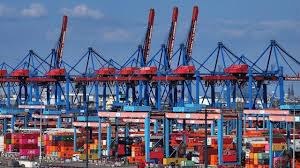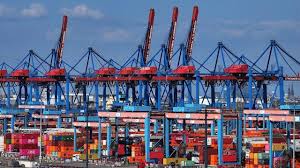EU fur ban: Is the European fur industry in danger?

Brussels: The European Parliament is examining a petition calling for a ban on fur. While the petition is good news for animal welfare, there have been some concerns about the potential ban’s economic consequences, as the EU is a leading fur producer and seller.
The Fur Free Europe European Citizens’ Initiative is calling for a ban on fur farming and sales across the European Union.
It has gathered over 1.5 million signatures across 18 member states, and is being presented on Thursday to the European Parliament by the committees on the Internal Market and Consumer Protection (IMCO) and on Agriculture and Rural Development.
However representatives of the fur industry are dismayed that they have not been consulted on the matter.
“We’re extremely disappointed that a debate which is discussing the future of the sector is taking place without any balance,” Mark Oaten, CEO of the International Fur Federation, told Euronews.
A near-total ban on fur in the EU would close down thousands of farms, and force many clothes producers to switch to fur-free or faux-fur collections.
Although the petition is a positive development for animal welfare, some express worry regarding its possible economic impact, given that the EU holds a significant position on the global fur market. Are these fears well-founded?
Globally, the fur industry is worth $17 billion (€16 billion), according to Mark Oaten. The industry is intrinsically bound to the luxury fashion industry, and Asian markets where the demand is high.
The EU is the second-largest producer of fur globally, behind China.
In 2021, EU fur exports represented €107.8 million, according to several animal welfare organisations.
The industry represents about 100,000 jobs, scattered between the farming, production and sale of fur products.
But the production of fur in the EU is already in sharp decline.
So far, 14 member stateshave banned fur farming, and many have implemented strict laws to ensure animal welfare, de facto slowing down fur production.
“What I would say to animal welfare activists, is that we absolutely respect their right to oppose fur, but they must respect consumers and farmers rights to both buy fur and to be able to farm,” said Oaten. “It’s about protecting people’s livelihoods. It’s about choice.”
The latest figures point in a rather pessimistic future for the industry: in just two years, fur production has been more than halved – and it has been on the decline for about a decade.
According to The Fur Free Alliance, mink fur production represented 18 million pelts in 2020 in the EU, and was down to 7.5 million last year. The same goes for fox fur, with 700,000 produced in 2022, compared with 1.2 million in 2020.
The decrease in demand is attributed to animal welfare groups’ awareness campaign, coupled with the effect of the consequences of the war in Ukraine on retail, and the COVID-19 pandemic that increased wariness of animal-to-human transmission of diseases.
Denmark, a large EU mink fur producer, decided to kill around 15 million animals to prevent the transmission of COVID-19 variants.
Animal rights activists can rest assured that the European fur industry is not the only one in decline.
China, the world’s leading fur producer, and Canada, whose fur production is engrained in the country’s traditions, have also seen their industries rapidly shrink these past few years.
After the introduction of the petition banning fur on Thursday, members of the European Parliament are set to debate the ban on 19 October – taking into consideration both the consequences for the European fur industry and animal welfare.





